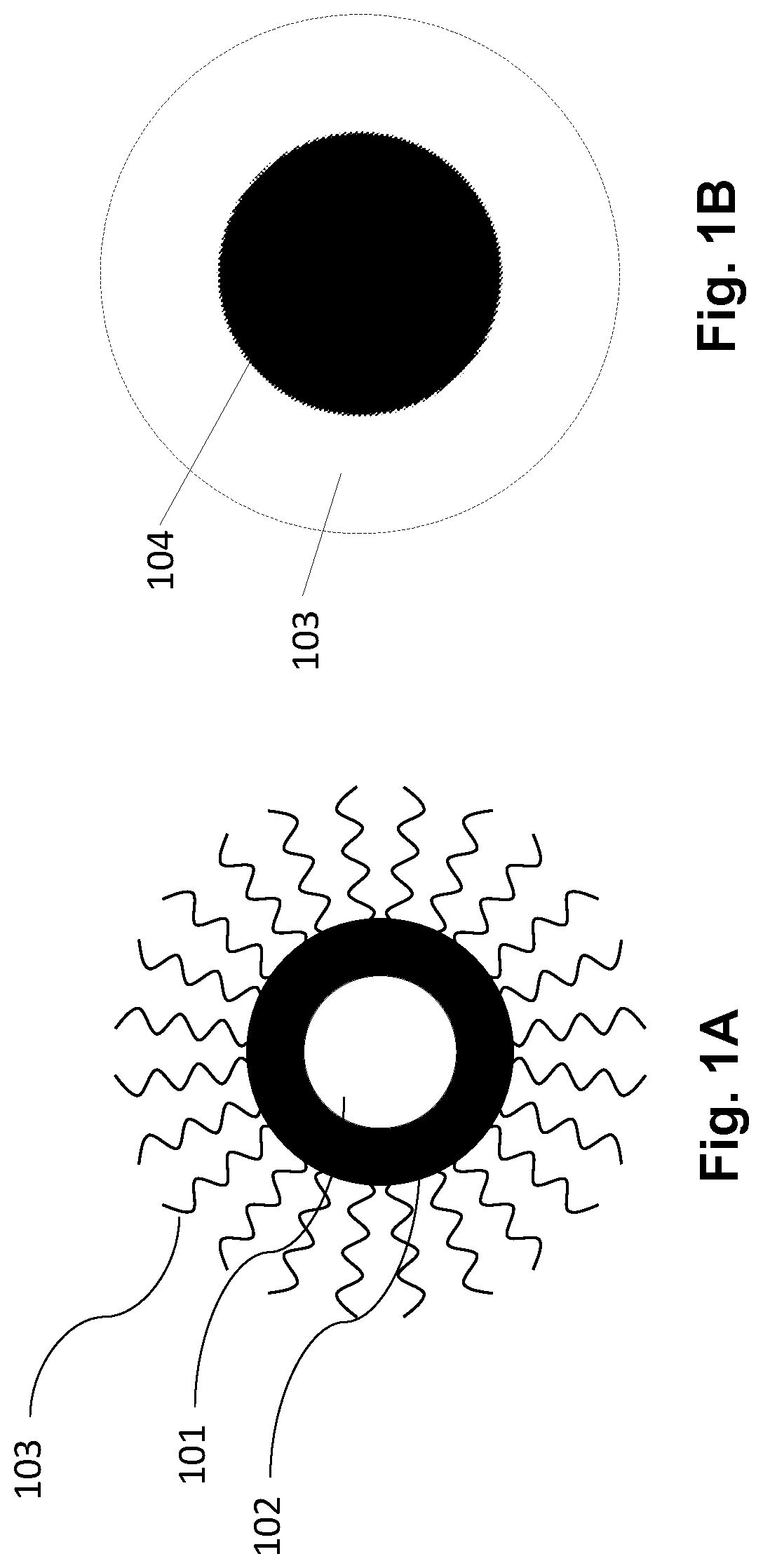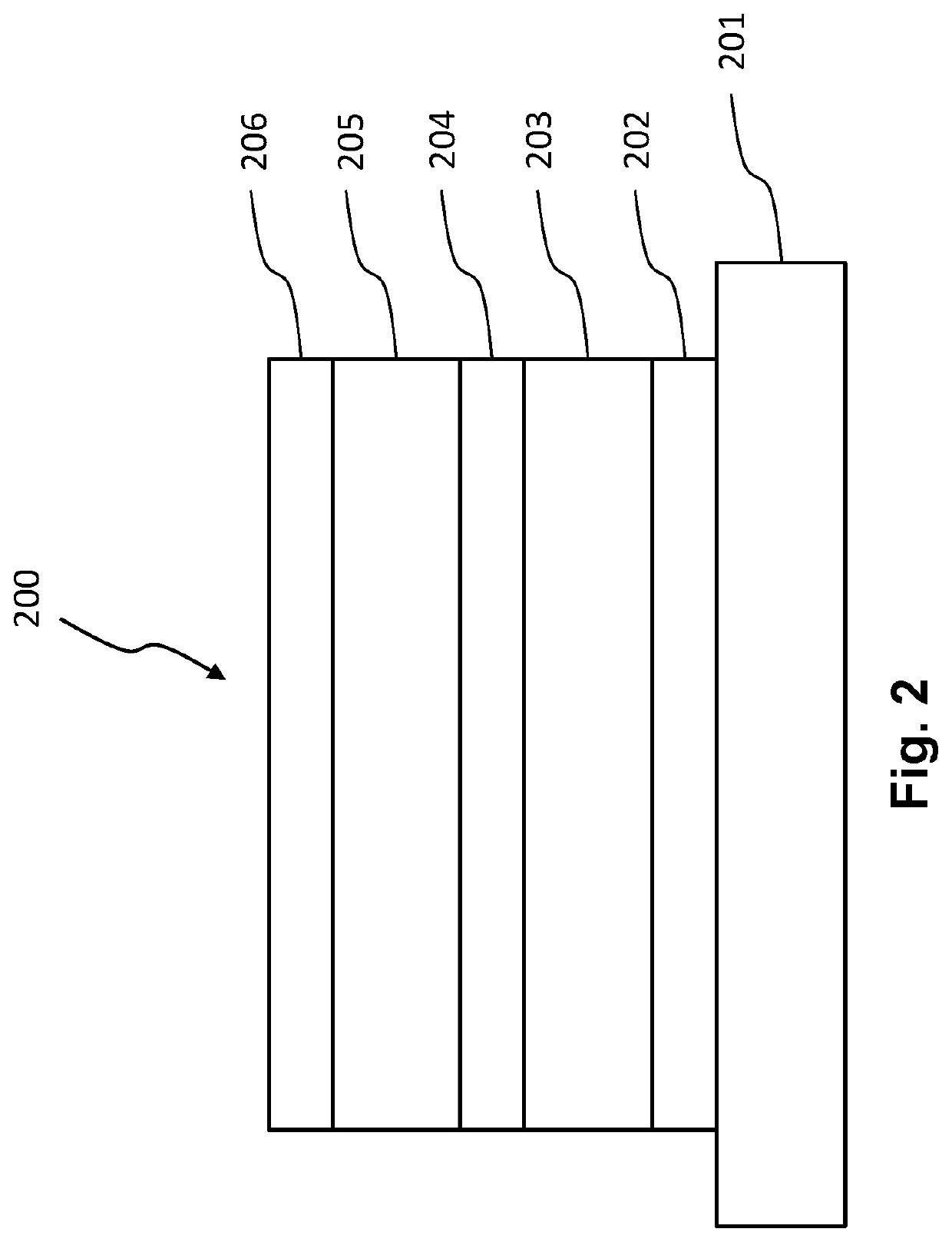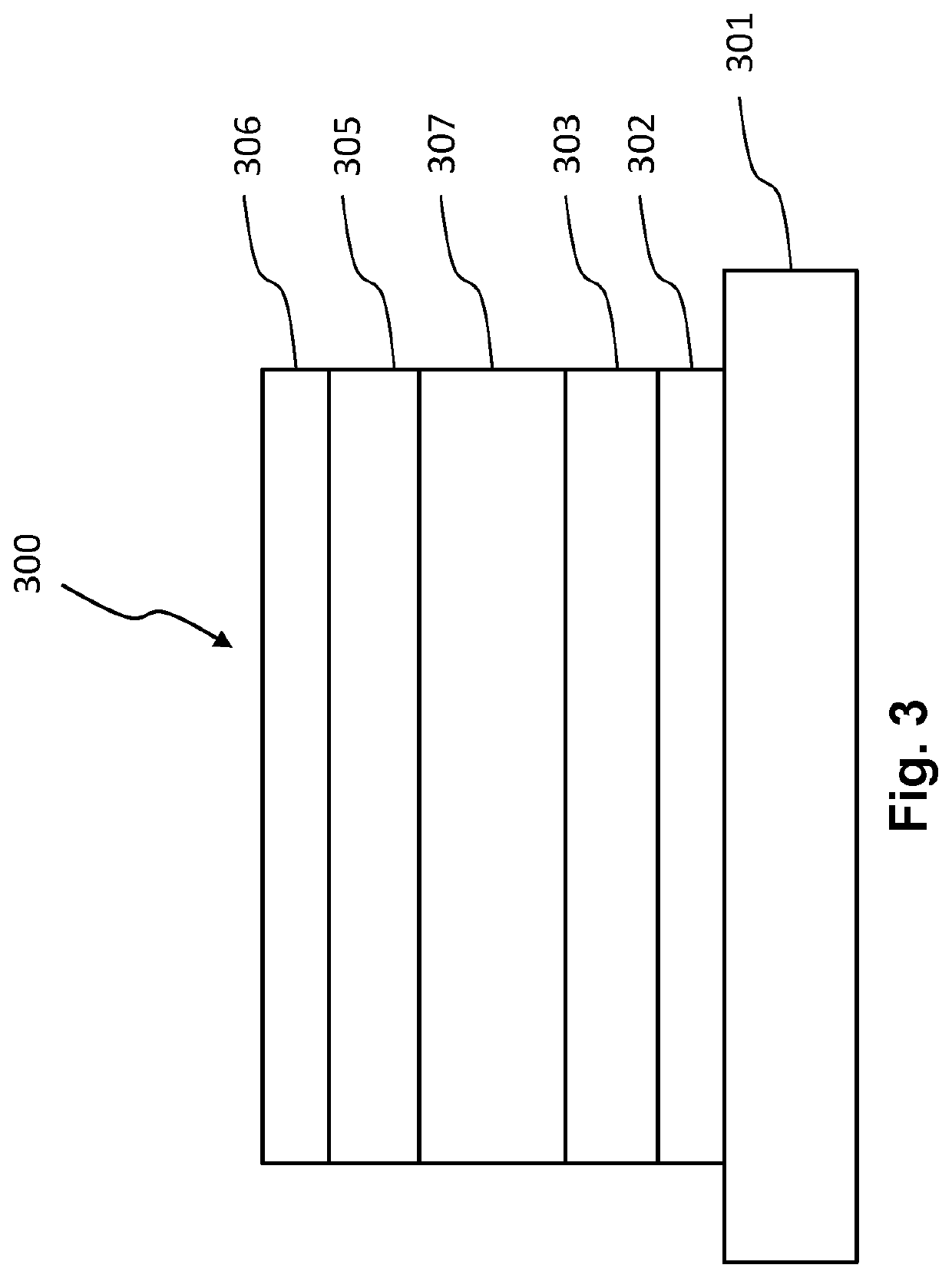QLED fabricated by patterning with phase separated emissive layer
a phase separated emissive layer and patterning technology, applied in the direction of basic electric elements, semiconductor devices, electrical apparatus, etc., can solve the problems of high fabrication cost, limited applicability to useful applications, and complex structure of qd-led layer, and achieves improved emissive layer structure, easy fabrication, and small size
- Summary
- Abstract
- Description
- Claims
- Application Information
AI Technical Summary
Benefits of technology
Problems solved by technology
Method used
Image
Examples
Embodiment Construction
[0020]Embodiments of the present invention will now be described with reference to the drawings, wherein like reference numerals are used to refer to like elements throughout. It will be understood that the figures are not necessarily to scale.
[0021]FIG. 1A and FIG. 1B are drawings depicting a two-dimensional schematic representation of a conventional core-shell QD as may be employed in a conventional emissive layer. The quantum dots may be configured as nanoparticles. A nanocrystalline core 101 is co-crystallised with a shell of a compatible material 102, which is then surrounded by ligands 103 that passivate crystal defects in the core-shell QD and allow and improve solubility in common solvents. FIG. 1B is a schematic simplified version of FIG. 1A used for more convenient representation of QDs in a light-emitting device structure, depicting a generalized core-shell QD structure 104 surrounded by a region of ligands 103.
[0022]Exemplary quantum dot core and shell materials include ...
PUM
| Property | Measurement | Unit |
|---|---|---|
| charge transport | aaaaa | aaaaa |
| distance | aaaaa | aaaaa |
| area | aaaaa | aaaaa |
Abstract
Description
Claims
Application Information
 Login to View More
Login to View More - R&D
- Intellectual Property
- Life Sciences
- Materials
- Tech Scout
- Unparalleled Data Quality
- Higher Quality Content
- 60% Fewer Hallucinations
Browse by: Latest US Patents, China's latest patents, Technical Efficacy Thesaurus, Application Domain, Technology Topic, Popular Technical Reports.
© 2025 PatSnap. All rights reserved.Legal|Privacy policy|Modern Slavery Act Transparency Statement|Sitemap|About US| Contact US: help@patsnap.com



